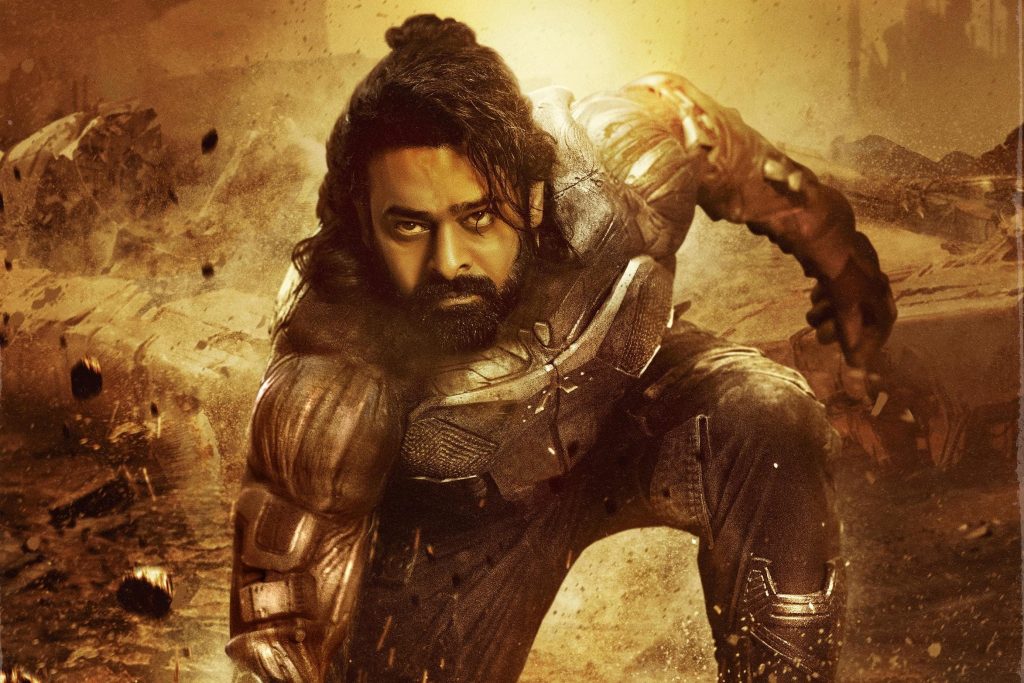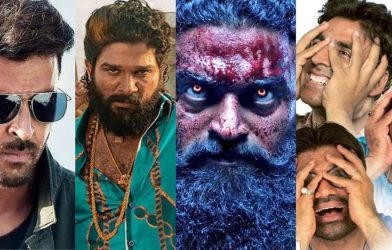EXCLUSIVE: “I’m not so good at this part, you know,” Indian megastar Prabhas tells Deadline on the set of upcoming mythological sci-fi movie Kalki 2898 AD.
He is referring to his inability to push his work “into the international level,” but this might all be about to change. For Deadline is speaking to Prabhas in the late evening about a movie which, at a reported budget topping 600 crore rupees ($72M), is estimated to be one of the most expensive Indian movies ever made, potentially the most. Aswani Dutt’s Vyjayanthi Movies is behind the production, with Swapna Dutt and Priyanka Dutt producing.
Releasing on June 27 after multiple delays, director Nag Ashwin’s Kalki 2898 AD is a sci-fi infused retelling of the Hindu myth of Kalki and the Kali Yuga, the end of the current world age. The film launched its first teaser at the San Diego Comic-Con last year under previous title Project K, becoming the first Indian film to do so. “The whole film is made for international [audiences],” says Prabhas. “That’s why it’s the highest budget and we’ve got the best actors in the country.”
Along with Prabhas, the film brings together some of India’s most renowned actors – veteran Bollywood star Amitabh Bachchan, Deepika Padukone, who was India’s top-paid actress last year, and multiple National Award-winner and Tamil actor Kamal Haasan. “I never thought I would work with people like Amitabh Sir and Kamal Sir [at all], let alone in one film,” Prabhas adds. “When I heard, I called the producer and said, ‘What are you giving me? This is an achievement beyond anything’.”
While India’s international film footprint is primarily associated with Hindi-speaking Bollywood, Kalki 2898 AD is shot primarily in Telugu and will release simultaneously in five languages. It is the latest example in a string of recent films that have been dubbed “pan-Indian” by critics, featuring stars from Bollywood in the same productions as those from regional Indian film industries such as Telugu, Tamil and Malayalam. Since starring in S.S. Rajamouli’s Baahubali: The Beginning and Baahubali 2: The Conclusion – which were the top-grossing Indian movies ever at the time of release – Prabhas has been widely regarded as the first ever “pan-Indian” actor.
“We were hearing for the first time people calling me ‘pan-Indian’,” he says. “That doesn’t really affect me but it’s a good feeling to think that people around the country like me now.”
Throngs of fans
Prabhas is being modest, as evidenced by the throngs of fans in his home state of Telangana that gather for a promotional event two days before our chat.

The event in Telangana. Image: Treeshul Media Solutions
An estimated 15,000 fans congregate to see the launch of Bujji, a custom-made sentient car that acts as a comic sidekick to Prabhas’ lead character Bhairava in the film. Police patrol the area to prevent a stampede, and a meshed grill separates the crowds from Prabhas, who pulls up two hours late in a working model of the Bujji car accompanied by a blaze of pyrotechnics, dramatic music and squad of black-costumed stormtroopers.
Although Bollywood is undeniably huge, the level of devotion bestowed on South Indian film stars (specifically in the Tamil and Telugu film industries) is reminiscent of frenzied parasocial behaviour more commonly seen among obsessive fandoms of musical artists. Of the 10 minutes he takes to address the masses, several are spent apologizing for a promotional Instagram story teasing “a very special person,” which prompted fans to speculate wildly about his relationship status. “I’m not getting married any time soon, I don’t want to hurt the feelings of my female fans,” assured Prabhas, the crowd roaring its approval.
“In the South especially, [the fans] feel like you are their family,” he explains to Deadline later. “They feel everything. Sometimes they feel like you are their son, the kids feel like you are their brother. Sometimes they feel like you are God.”
“So whatever is said and done, I will be very careful that I will not cheat them,” he adds.
The pressure to not let people down is perhaps felt even more keenly by 38-year-old Ashwin, who is directing the movie. “We have four of the biggest stars in the country, some of the biggest VFX studios and there are a huge amount of action sequences as well,” he explains.
A self-professed nerd as a child, Ashwin’s vision for Kalki 2898 AD resembled “a character from [Indian mythological comic book] Amar Chithra Katha fighting someone from X-Men”. “I hope people will feel really strange when they leave the theater after watching Kalki 2898 AD, and will say, ‘Where am I? Can I go back into this world?’,” says Ashwin, who recalls feeling similarly disoriented after watching James Cameron’s Avatar. He says he made the movie for his 10-year-old self.
The scale of promotion is intended to be global – as seen from last year’s Comic-Con launch – but Ashwin is clear he will not modify any of the names to be more palatable to non-Indian audiences. “It’s Ashwatthama,” he says, spelling out the full name of Bachchan’s cursed warrior character. “Ashwatthama with two T’s.”

Bollywood dancers perform before the ‘Kalki 2898-AD a.k.a. Project K’ panel and screening at the 2023 Comic-Con International: San Diego
Michael Buckner/Getty Images
World cinema has seen countless adaptations of Norse, Greek and Roman mythologies, but Hindu is trickier to adapt because it still boasts more than 1 billion adherents worldwide. An increasingly polarized India has seen multiple film adaptations of Hindu mythology announced in recent years, including Namit Malhotra’s upcoming version of Hindu epic Ramayana. Hailed as a global collaboration and featuring Hans Zimmer on the score, this movie will become another of India’s most expensive film productions in 2025.
Ashwin is not concerned, stating that Kalki 2898 AD does not involve any characters actively worshipped by large numbers of Hindus. “We can take it as extremely religious or we can take it as the story of somebody who was born with a lot of power, didn’t know what to do with it, and found his mentor in the process,” he says as Prabhas nods agreement. “Of course, if you tell it in the Indian context there will be a bit of devotion and emotion, but I feel any story can be dealt with subjectively without bringing a religious connotation.”
Kalki 2898 AD is the first instalment in this universe, and, if the first performs well, Ashwin, who says Marvel movies “open massively” in India, plans to direct sequels. Aside from ensuring the financial satisfaction of the film’s stakeholders (including his wife, sister-in-law and father-in-law, who are producers on the film), Ashwin’s definition for success involves “reaching people and demographics that we didn’t sit in a room and try to target.” He shares the example of going on a family holiday to the northeast Indian state of Sikkim, where a small theater was still showing Baahubali a month or two after its release. “I thought that was really cool because I don’t think the makers planned that to happen.”
“If that happens for this movie, that would be something special.”









